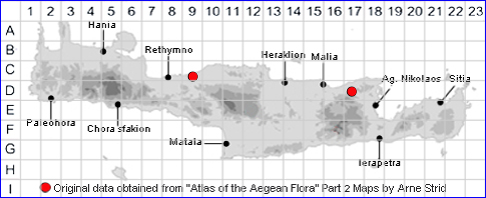
GLOSSARY OF TERMS USED
Achene:- A single-seeded dry fruit, not splitting.
Awn:- A stiff bristle-like projection, sometimes barbed or feathered. a fine bristle ending an organ.
Bract:- An organ, often small and scale-like, but sometimes leaf-like, located where the flower-stalk joins the stem.
Calyx:- A Collective name for the sepals - the outer whorl of organs in most flowers.
Calyx lobe:- One of the free upper parts of the calyx which may be present when the lower part is united into a tube.
Calyx tube:- The tubular, often cup shaped or bell shaped, fused part of the calyx when it is free from the corolla.
Internode:- The portion of a stem between two nodes.
Lanceolate:- Lance-shaped: more or less elliptical but broadest below the middle.
Membranous:- Thin and dry, often opaque or transparent - like a membrane.
Midvein:- The vein in the center of a leaf.
Node:- Points on the stem where the leaves arise; often regularly spaced.
Ovate:- Broad and rounded at the base and tapering toward the end
Pericarp:- The part of a fruit enclosing the seeds that develops from the wall of the ovary.
Procumbent:- Trailing along the ground but not rooting.
Achene:- A single-seeded dry fruit, not splitting.
Awn:- A stiff bristle-like projection, sometimes barbed or feathered. a fine bristle ending an organ.
Bract:- An organ, often small and scale-like, but sometimes leaf-like, located where the flower-stalk joins the stem.
Calyx:- A Collective name for the sepals - the outer whorl of organs in most flowers.
Calyx lobe:- One of the free upper parts of the calyx which may be present when the lower part is united into a tube.
Calyx tube:- The tubular, often cup shaped or bell shaped, fused part of the calyx when it is free from the corolla.
Internode:- The portion of a stem between two nodes.
Lanceolate:- Lance-shaped: more or less elliptical but broadest below the middle.
Membranous:- Thin and dry, often opaque or transparent - like a membrane.
Midvein:- The vein in the center of a leaf.
Node:- Points on the stem where the leaves arise; often regularly spaced.
Ovate:- Broad and rounded at the base and tapering toward the end
Pericarp:- The part of a fruit enclosing the seeds that develops from the wall of the ovary.
Procumbent:- Trailing along the ground but not rooting.
SPECIES DESCRIPTION
PARONYCHIA ARGENTEA
Family:- CARYOPHYLLACEAE
Common Names:- None
Synonyms:- None
Meaning:- Paronychia (Gr) Beside-nail, a name used by the Greek physician and
botanist Dioscorides, for its former use to treat whitlows.
Argentea (L) Silver ,silvery.
General description:- Low matted perennial.
Stems:-
equalling or longer than the leaves.
Leaves:-
Flowers:-
1) Clusters, usually more than 8 mm in diam, well-defined.
2) Bracts, 4-6 mm, ovate, acute, silvery, concealing the flowers.
3) Calyx, 1·5-2·5 mm.
small spines; membranous margins equalling or wider than the brownish,
usually smooth midvein.
Fruit:-
Key features:-
1) Calyx-lobes equal or subequal.
2) Leaves more than 1 mm wide.
3) Bracts conspicuous, exceeding the calyx; 4-6 mm, ovate, concealing the
flowers.
4) Flower-clusters usually more than 8 mm in diam, well-defined.
Habitat:- Dry, sandy and gravelly places, dry open shrubby vegetation, scrubland
vegetation. 0-250 m.
Distribution:- In Greece known only from the Aegean area. - Widespread, but
scattered in the Mediterranean region, eastwards to the Aegean area and Anatolia,
Rare on Crete, currently known from only two locations.
Flowering time:- Mid-Apr to June.
Photos by:- By kind permission of Saxifraga - Free Nature Image
